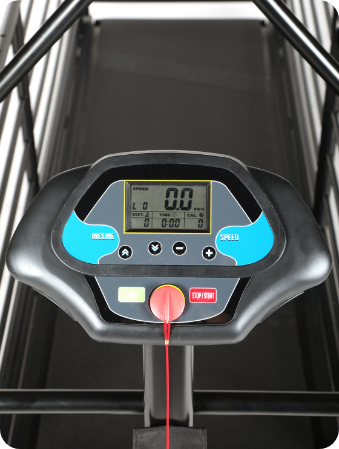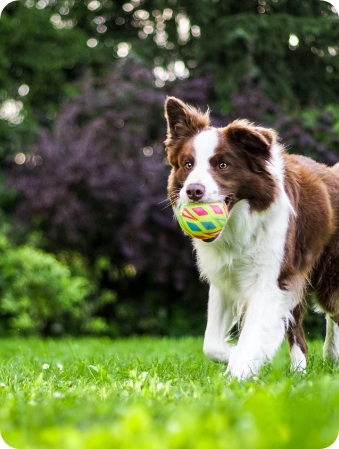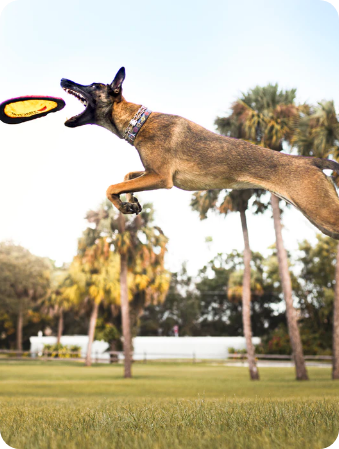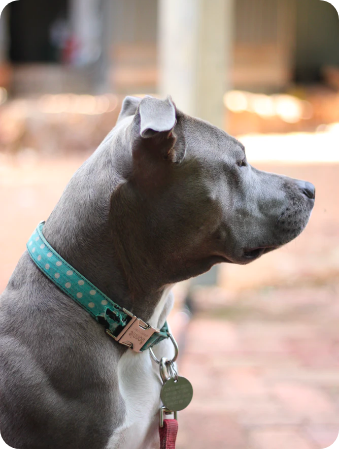Electric Treadmill Benefits over
Non-Electric Treadmills
Electric Treadmill vs Slat/Carpet
Treadmills are extremely beneficial and can help you and your dog reach your fitness and exercise goals for them. However, there are various options on the market and it’s important to do your research to understand which is the best option for you and your dog.
-
Non-motorized versus Electric Treadmills
You might be wondering if there are a difference in benefits between a non-motorized treadmill and an electric one. When you use a non-motorized treadmill, you are providing your dog with a completely different exercise routine than the electric because dogs will usually canter or gallop on a non-motorized mill. With an electric one, dogs will trot using a symmetrical movement that requires a great deal of coordination. Motorized treadmills also help your dog build muscle or increase their stamina because it provides a long distance, steady trot that can provide the resistance needed. Your dog’s own body weight will provide the resistance versus the harness required on a non-motorized treadmill. Your dog’s form can be perfected with a motorized treadmill because the controlled consistency will help your dog trot, drive, and move naturally. Ultimately, the electrical treadmill will provide a shorter training time for you and your dog because the constant movement of the tread will prevent any premature recovery. Since dogs have a different cardiovascular system than humans, they can recover quicker if they’re speed is changed or slowed down.

-
Progressive Conditioning Program
Since you have full control of the speed, incline, time, and duration of distance, you can provide your dog a progressive conditioning program. When considering the basic principles of exercise science, the concept of overload is that the body needs to undergo more than the normal level of stress. Once that overload is achieved, the principle of progression is then applied to see further improvements in fitness while still preventing any injury. By using a dog treadmill, you can apply this same science to your dog’s fitness regime and document and record their progress and the variables (speed, duration, etc.) to provide the best level of exercise they need.

-
Improving Your Dog’s Natural Reach and Show Presentation
A dog treadmill will also help improve your dog’s natural reach by providing them a sustained distance run. You can also work on improving you and your dog’s goals for better show presentation. The ability to shut the mill off will assist you in teaching a proper stacking position for show stance. You can also manipulate the dog’s position while the mill is turned off and observe from a distance so you can make adjustments as needed. You can then transition from the show stacking position into a walking gait and running gait, making adjustments with the use of the speed control and handler assistance . The electric treadmill is valuable in this training to perform and document a detailed gait analysis as far as time, speed, and duration. These training exercises will assist in conditioning the dog to the different commands required during transitions in a conformation show as well as build your dog’s endurance, reach, and satisfy the dog’s natural drives.

-
Building Your Dog’s Muscle
You can also use the dog treadmill to build your dog’s muscle by applying the concept of resistance through any incline you set. For a dog who has never been on a treadmill, a 3% incline could build muscle. The higher the incline, the more resistance is created, resulting in more strain on the muscle. Resistance exercises create small rips and tears in the muscles which the body then rebuilds bigger and stronger. It is very important to build the resistance slowly over time in order to avoid injury. With the control of the treadmill and assistance from the handler, we can identify when your dog is ready for more incline. Two essential things to keep in mind when trying to build muscle are always 1) rest/ recovery and 2) nutrition from a balanced diet.

-
Better Control for You and Your Dog
WIth an electric dog treadmill, you can control and properly guide your dog through the entire workout routine and take them through the different levels of progression. From the moment you introduce your dog to the treadmill to the actual workout and then the cool down period, you can apply an exact science and formula to you and your dog’s program. Since non-electric treadmills have less control, you can expect some limitations or even potential errors when running your dog through an exercise. You and your dog can have more confidence with an electric treadmill and lessen any potential risks of injury. With the electric treadmill, you should always start slow and then gradually increase speed and duration over time.

-
Great Rehab Tool for Injuries or Older Dogs
The electric dog treadmill can also be a great aid in recovery and rehabilitation for an injured or older dog. With the ability to fully control their workout, you can adjust and apply the level of speed they can handle.

-
Helps with Anxious or Aggressive Dogs
We use the treadmill for dogs with confidence issues since we can help gradually get your dog onto a mill and by getting them used to it, we can build a relationship, trust, and provide them with a sense of accomplishment. With dogs that are fearful or aggressive with people, we can use the mill to transfer the anxiety and aggressive tendencies into the movement of the mill. At the same time, the handler will be able to teach and desensitize to the fear and adjust levels of speed and incline as needed to help supplement the training.

-
Desensitize Your Dog
If you need help desensitizing your dog, we can use the mill to focus your dog’s anxiety and aggression into the exercise while petting them in a normally unwelcomed area. We can gradually build your dog’s confidence so they can slowly get used to the feeling and behavior. This will then allow us to transfer that training off the treadmill and build towards you and your dog’s goal to be more confident and welcoming to physical contact.

-
Training Your Dog Commands
Since dogs naturally crave running and rigorous exercise, we can use the treadmill as a reward when training your dog commands. Whether that’s sit, stay, etc. once they complete the command, we can free your dog so they can run and enjoy the treadmill.











